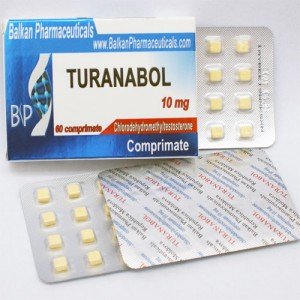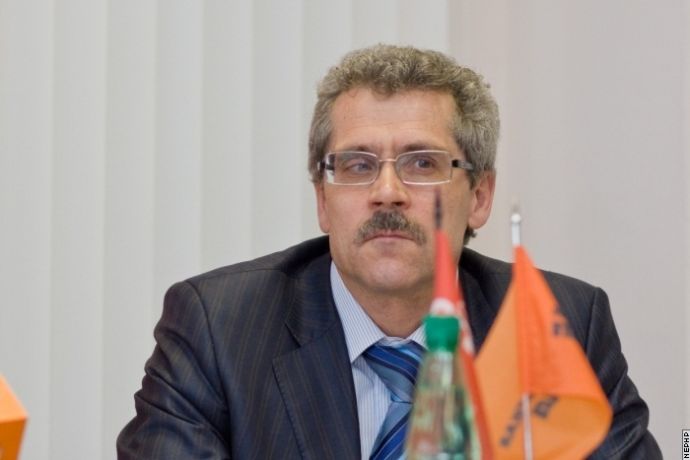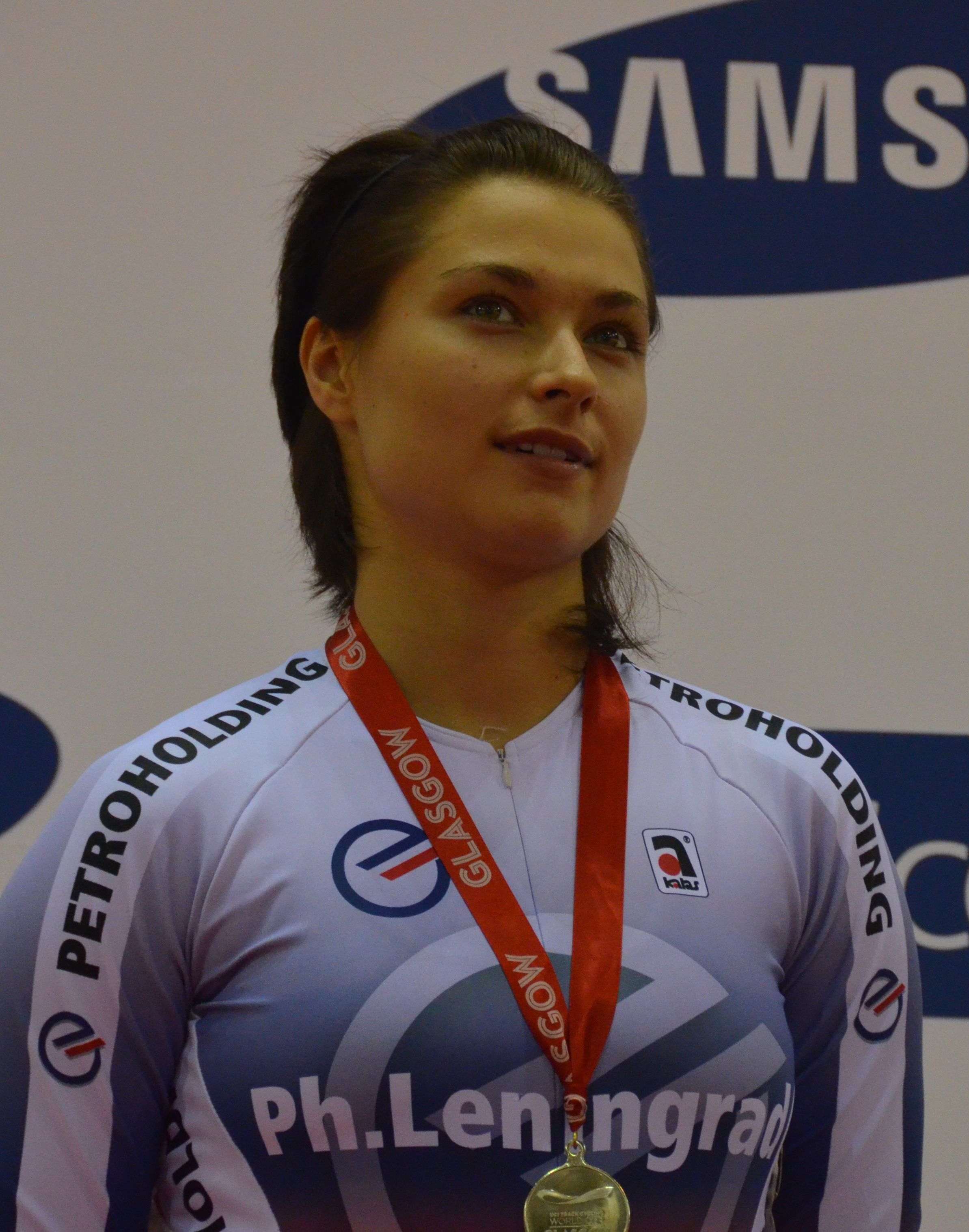“Doubt is an uncomfortable condition, but certainty is a ridiculous one.” – Voltaire
1960
 Turinabol . or to use its proper name, Chlorodehydromethyltestosterone, was originally developed in the early 1960’s by an East-German company, Jenapharm. Used extensively by East German athletes it propelled them on the world stage to rival superpowers USA and Russia in the seventies and eighties (Jenapharm later went on to produce epitestosterone which has no practical purpose except to disguise testosterone use), and in 2005 the company was forced to contribute $4.1m to a fund to compensate former athletes forced to dope. With the collapse of the eastern block, and more modern anti doping methods Turinabol gradually fell out of fashion (despite its relatively short detection window), and officially, is no longer manufactured despite being widely available.
Turinabol . or to use its proper name, Chlorodehydromethyltestosterone, was originally developed in the early 1960’s by an East-German company, Jenapharm. Used extensively by East German athletes it propelled them on the world stage to rival superpowers USA and Russia in the seventies and eighties (Jenapharm later went on to produce epitestosterone which has no practical purpose except to disguise testosterone use), and in 2005 the company was forced to contribute $4.1m to a fund to compensate former athletes forced to dope. With the collapse of the eastern block, and more modern anti doping methods Turinabol gradually fell out of fashion (despite its relatively short detection window), and officially, is no longer manufactured despite being widely available.
2016
On April 7th 2016 USADA broke the news that Frank Mir had tested positive and it was later revealed by Frank that it was for “trace metabolites” of Oral Turinabol. Frank wasn’t the first. In 2015 at the world weight-lifting championships 11 athletes tested positive for the drug, in Baseball Daniel Stumpf of the Philadelphia Phillies, Chris Colabello of the Blue Jays and minor league player Kameron Loe all tested positive for the substance in the early part of 2016 and by mid 2016 the trickle became a flood as the retroactive testing of the 2008 and 2012 Olympic samples revealed more than 60 incidents involving Turinabol.
The assumption was, that athletes had for some reason reverted to an old fashioned substance, gone old school in an attempt to avoid detection, when the reality was far simpler.
2012

In 2012, Grigory Rodchenkov and Tim Sobolevsky published a paper in The Journal of Steroid Biochemistry and Molecular Biology detailing the procedure for a new test for oral turinabol.
At this point, a certain degree of irony enters the situation. Rodchenkov as the director of the WADA lab in Moscow was seen as a leading light in the anti doping community, yet, as revealed in the McClaren report was very much but that.
“while appearing to be at the forefront of the development of doping detection science, he was secretly developing a cocktail of drugs with a very short detection window.” – Richard McClaren 2016
On one hand, Rodchenkov and Sobolevsky were able to discover 6 new metabolites of Turinabol that remained in the body for weeks, perhaps even months after administration, the most relevant being that of “M3” that they claimed could be detected seven weeks after administration.
(The key is that they have discovered “metabolites” that appear in the body that are the result of Turinabol use – substances that remain in the human body for a much longer period than the actual Turinabol will).
On the other hand, Rodchenkov was behind a Russian program of testing athletes prior to big games to ensure they would not fail during the competition, and creating the “Duchess”, a mixture of steroids (including Turinabol) and alcohol which ensured swift absorption but equally quick excretion.
Why did one of the main perpetrators behind Russia’s doping program decide to publish a new paper on how to detect the very substance they had used for years? Well, Russia had left behind Turinabol in the “Duchess” replacing it with Trenbelone and the paper, conventiently, was not released in time for it to be put in place for the 2012 Olympics in London.
Peter Van Eenoo, director of the drug testing laboratory at the University of Ghent (Belgium) thinks he has the answer…
“If you’re really clever, you’d only do this once you’ve got something else and you want to hit the competition.”
The effect was immediate as Russia’s rivals in international competitions such as weight-lifting were hit by multiple Turinabol positives.
2013
By 2013, development of the test had been taken over by the Cologne lab and in late 2013 ARD broke the news that in trials hundreds of samples had tested positive for Turinabol using the new methodology. By 2015, the procedure had been rolled out to labs around the world, and the stream of positives for the archaic soviet block leftover turned into a tsunami.
Questioning the methodology
Of several lab directors consulted, some privately expressed reservations about how the original research may have been conducted in the tainted Moscow lab, but all said its findings had been upheld by subsequent work elsewhere. The metabolite in question, they said, could only come from turinabol or “designer steroids” based on turinabol but so close to the original they would also come under the same ban. – James Ellingworth – Associated Press
“They can’t be described as turinabol metabolites using this method, What could they be? Maybe they’re metabolites of a different steroid. Maybe they’re metabolites of orange juice.” – Artyom Patsev (Sports Lawyer)
In July 2016 Arthur T Kopylov of the Institute of Biochemical Chemistry, Moscow had published his report entitled Novel metabolites of turinabol: WADA moving toward illusions.
Now it could immediately be argued that Kopylov, as a Moscow based scientist and with his paper being cited by a large number of Russian athletes in their defences against doping charges could raise questions of his impartiality, but he does address several issues he has with the methodology and the implementation of the new procedure.
He questions that almost all the citations in regard the original paper are from individuals associated with WADA laboratories or institutes. He addresses that in 4 years since the publication of the paper there has been very little “scientific discussion” on the paper, but instead, its findings being accepted without question and implemented in WADA accredited labs.
In particular he draws conclusion in the form of seven different issues.
- No negative controls, confirming absence of interference and side-effect from matrix and other substances;
- No post-administration assay, confirming that the proposed structures derived from turinabol;
- No synthetic standards that could confirm the proposed structures and the spectra;
- Baseless conclusion of detection window for the novel metabolites, because post- administrative assay has not been conducted (repeat the ‘meldonium saga’?);
- Huge discrepancies between presented data and its interpretation, and some wrong conclusions that seem to be intentionally made by the authors;
- Inconsistence of the proposed structures with those found and validated by authors already after the publication of the presented method;
- No confirmation of the proposed structures by alternative approaches which regularly should be (and are) provided in case of discovery of a new substance.
These issues are described in our critical review of the method for detection of long-term metabolites of turinabol, and altogether lead to the main conclusion of inability to apply the method in its current state, thus, the results cannot be absolutely believable and require a careful revision by wide scientific community. – Arthur T. Kopylov – July 2016
 Several athletes have used Kopylov’s papers in their defence, including the IOC hearing in the case of cyclist Ekaterina Gnidenko . She was represented by Artem Patsev who has represented many Russian athletes and has relied on Kopylov’s papers. On the other side, appearing as an expert witness was Prof Martial Saugy of the Lausanne Anti-doping Laboratory who’s primary role was to explain (and defend) the methodology, as it was the Lausanne lab responsible for the retesting in the case of Ms Gnidenko.
Several athletes have used Kopylov’s papers in their defence, including the IOC hearing in the case of cyclist Ekaterina Gnidenko . She was represented by Artem Patsev who has represented many Russian athletes and has relied on Kopylov’s papers. On the other side, appearing as an expert witness was Prof Martial Saugy of the Lausanne Anti-doping Laboratory who’s primary role was to explain (and defend) the methodology, as it was the Lausanne lab responsible for the retesting in the case of Ms Gnidenko.In total the IOC held three hearings, all of which featured the testimony/evidence of Saugy and Kopylov making the following findings:
- The method which was used is a method which has been approved by WADA and determined as fit for purpose.
- It is based on a peer-reviewed publication, namely the publication of Tim Sobolevsky and Grigory Rodchenkov in Journal of Steroid Biochemistry and Molecular Biology.
- Since its approval by WADA, this method has been validated and implemented in the majority of WADA-accredited laboratories including the WADA-accredited laboratories of Lausanne and Cologne.
At best, that is a loose defence. So the method has been deemed fit for purpose, is based on a peer reviewed publication (With the peers largely being linked to WADA labs) and has been used in lots of labs since. The “we say it’s true, so it must be true” approach from WADA that others have drawn issue with.
Regarding the allegations made by Kopylov however, they addressed each point individually.
- Regarding the alleged lack of negative controls: this observation has no factual basis. Prof Saugy expressly mentioned that negative controls were used in the validation (as is LRT II – 004 12 required and normal). It is also noted that in each of the thousands of applications of the method, negative controls have been used.
- Regarding the alleged lack of post-administration assays: this observation again lacks a factual basis and is even contradictory to the one based on the absence of synthetic standard (see below). In the absence of a synthetic standard, the validation process is conducted based on positive samples obtained in excretion studies: i.e. post administration assays.
- Regarding the lack of synthetic standard: The application of a synthetic standard is expressly not a requirement pursuant to the ISL.
- Regarding the alleged “baseless conclusions with regard to the detection window”: The only conclusion which is drawn in this respect is that the detection window has been significantly extended (up to 50 – 60 days). This was shown to be correct with even longer detection windows observed in certain cases. This is the reason why the method proved so effective in catching dopers, who had planned according to a window of detection meant to be much shorter. The Disciplinary Commission cannot detect any baseless conclusion in this respect but rather a meritless argument.
- Regarding the alleged “huge discrepancies between presented data and its interpretation”: the Disciplinary Commission observes that this allegation is simply not substantiated. As such, it has no value and seems aimed at creating the impression of the existence of issues, which are effectively not characterised.
- Regarding the “alleged inconsistencies of the proposed structures with those found and validated by authors”: the Disciplinary Commission understands that the study to which Dr Kopylov refers describes the transformation of the substance into specific metabolites in vitro, through the application of a particular enzyme. As noted by Prof Saugy, this logically does not exclude that the metabolites in question, which were not identified in this study, resulted from other more complex enzymatic pathways in the body. In any event, the excretion studies (and the results which have now been obtained over years of application) confirm that the metabolites in question are effectively obtained further to the administration of the prohibited substance. There is therefore no inconsistency between the publication to which Dr Kopylov refers and the identification of the substance by the method at issue. It is notable that the study in question was precisely issued by a team of the Cologne laboratory. When confronted with the question of how this could be explained that the same laboratory would continue to apply the method if there indeed was an inconsistency between the method and a study it had itself issued, it is noteworthy that Dr Kopylov had no explanation to provide.
- Regarding the lack of confirmation by alternative approach: while it is desirable to obtain confirmation, when possible, this in itself is not a reason to put the validity of a method into question.
Don Catlin, former head of the UCLA lab in the United States has his own issues. Initially have issue with how the Montreal lab presented their findings, he then goes on to discuss the test itself.
In the last several years, a new long-term metabolite, referred to as the M4 metabolite, was identified that increases the window of detection to at least 40-50 days, perhaps longer. The chemistry of DHCMT, however, appears to be such that after 20 days only the long-term metabolite would be detectable, while the parent and other identifying metabolites would no longer be detectable. While not many drugs in the WADA system rely on the presence of a single metabolite to demonstrate the presence of a drug, doing so is certainly acceptable.
When validating such methods, it is commonplace to verify that there are no ‘false positives.’ Whether there could be a genetic anomaly that may produce a ‘false positive’ circumstance that did not present itself during the validation process remains a remote possibility that presents a difficult theory to explore. Many of the athletes in question have been tested before and did not produce positive results. Chasing an inconsistent anomaly could prove to be an endless pursuit. Cody Stanley’s circumstances certainly heighten the intrigue behind the theory, but it has yet to be considered or proven.
and continues
there is the theory that a common genetic anomaly, or another substance related to DHCMT that is present in the environment, could produce the same long-term DHCMT metabolite used for detection in trace amounts in some athletes—remote possibilities that have yet to be demonstrated.
Where does that leave us?
Essentially it becomes a battle of opinions. On one hand the generally respected Marcel Saugy of the WADA lab in Lausanne, on the other hand, the equally (generally) respected Dr Kopylov of the Moscow Institute of Chemistry both offering conflicting opinions and interpretations.
Where does that leave Frank Mir?
The only thing we know for sure, is that Frank was “caught” by the new test. His samples showed the presence of “trace metabolites”, these mysterious M3 metabolites that can remain in the system by all accounts, months after administration.
“the window of detection has moved out to, typically, several weeks, and in some rare circumstances up to months after administration” – Daniel Eichner (Head of SMRTL) – 2016
How did they get there? That rather depends who you believe and put your faith in. Do you believe Frank who pleads innocence and Dr Arthur Kopylov’s claims that the methodology is flawed, and has not been satisfactorily discussed and investigated by the scientific community.
Or do we agree with the opinion of the much respected Marcel Saugy, in defending the test and its validity.
Why was Frank’s first test negative?
Several possibilities, the most likely being that the first batch of samples were not analysed using the new method of detection for the Turinabol metabolite. Alternatively Tokyo lab that processed the second samples could have a lower LOD (Limit of detection) and/or LOQ (Limit of quantification) than the lab in Salt Lake City. Finally, that the Turinabol entered the athletes system by whatever means, after the first sample collection, but prior to the second.
Update: In April 2017 Mir was suspended for two years. In USADA’s statement it was confirmed that his first sample had not been analysed using the more up to date Turinabol detection method. However, following the positive they retroactively tested that sample and that too was positive under the new method.
Does Frank have a case?
It seems on the surface unlikely. He could argue to a tribunal the findings of Dr Kopylov but USADA could argue that the IOC panel has already rejected these findings having had both Dr Kopylov and Dr Saugy as witnesses. Its almost certain that USADA would attempt to use the IOC panel findings as precedent. He could argue, in line with the Catlin concerns that the lab had failed to adequately demonstrate the presence of M3 Metabolite in the sample, but this would need a respected and credible doctor capable of challenging the lab findings.
The new test increased the window of detection from days to “six months or more” – Grigory Rodchenko
What we can say, is that based on the new test, the Turinabol could have entered Frank’s system, not just a few days before the sample collection but, practically, at any point in the months prior. Its even possible that the substance entered his system as far back as 2015. That sort of timescale, makes for instance, if it was a result of a contaminated supplement, almost impossible to detect the culprit.. You can remember what you took last week, can you remember everything you took months ago.
Going back to the case of Ekaterina Gnidenko
The Disciplinary Commission further observes that the application of the method over the years is effectively and in itself a confirmation of its validity – IOC Disciplinary Commission
Footnote:
In this respect, the Disciplinary Commission observes that supplements do not, as a rule, contain turinabol and that accidental contamination of a supplement appears to be very unlikely.